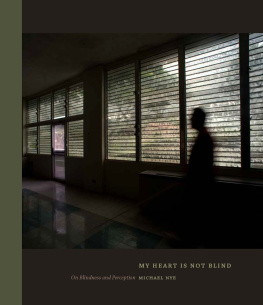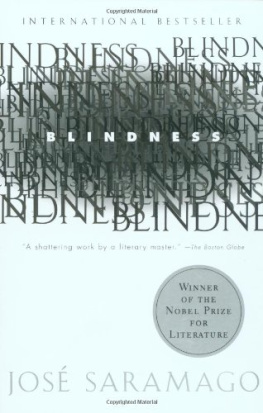In preparing this study I enjoyed the continuous assistance of librarians in several countries. Though I cannot mention all of them individually, I should at least express my profound gratitude to them as an irreplaceable pillar of scholarly work. The assistance of Mrs. Mira Reich was significant in writing this book, as it was in all of my previous books. Dr. Luba Freedman, my colleague and former student, was always ready to help. My greatest debt of gratitude goes to my wife, Berta, who read the whole text with a critical mind, and helped correct shortcuts of thought and obscurities of expression. For the remaining ones, I am responsible.
Introduction
One of my earliest encounters with art was when, as a young and curious child, I was leafing through the pages of an old illustrated journal. There I found a reproduction of Rembrandt's etching of 1654, representing Tobit, Tobias's father ( When I first saw the etching, on that early day in my life, I did not know the story. Nor had I seen a blind person from nearby, though some uncanny stories about blindness had been told to me. Unprepared, then, as I was, the image struck me so powerfully that I still remember that first encounter.
What was it in the engraving that so struck me? The etching is, of course, a moving representation of human infirmity, the manifestation of an old man's pitiful weakness. Yet there was also an additional dimension to it. Rembrandt's figure did not appear to me only as that of a shaky old man, for whom one can feel only sorrow and compassion. Though he was stumbling, the old man struck me as a venerable figure; he was surrounded by an aura, and an inherent dignity lifted him up from the level of old and feeble men that one could perhaps see in the street. His raised head, as if watching a vision within himself, did not ask only for sympathy. In my childish fantasy I called him a prophet. In sensing the figure's ambiguityinfirmity and dignity, evoking both compassion and awemy naive reaction was probably correct. Using the language of modern criticism and philosophy, I could say that I understood Rembrandt's figure.
Rarely did I see, in those distant days of childhood, a blind person, and even then only from a great distance. We children dreaded the blind and hesitated to get near them. The blind, it was whispered, know what you think; they can even know what you dreamt. The belief in the blind man's ambiguous nature had penetrated even the world of children.
Many years later I chanced upon representations of blind musicians, especially of blind harpists, in Egyptian art. In tomb paintings, and occasionally also a stele, the blind harpist is shown squatting on the ground, altogether immersed in the melody he is resounding by plucking the strings of a large harp (). An uninitiated spectator, as I was, reacts to the subject of these images with pity and compassion. Here was this wretched blind man, placed, so it seemed to me, in a humiliating posture, perhaps making music for the pleasure of an audience he cannot see. The conflicting, contorted condition of the figureblind and making musicseemed to be an emblem of the unfortunate's fate and condition. And yet, so I felt, these figures express some intrinsic grandeur. Even an uninitiated spectator will not compare them to the blind musicians one could sometimes see at a street corner of a Mediterranean city. Once again one sensed, however vaguely, that the figure conveys an ambiguous message.
This impression is confirmed by what students of Egyptian culture and art tell us. The blind harpists, they say, actually were of an elevated status, and this is conveyed by the images themselves (see again
Once again, then, a certain ambiguity or ambivalence characterizes the image of the blind. On the one hand, he is the unfortunate creature, deprived of what is often considered man's most precious gift, the ability to see the world and to find his way without the help of others. On the other hand, he is endowed, however vaguely, with an ability given to no other human beingto be in direct communication with a deity. He dwells in two worlds or hovers between them. These undefined, intuitive impressions suggest how complex people's understanding of the blind person was in premodern times. Blindness was a riddle. Throughout the centuries, with the memory of it remained the sense of mystery, the feeling of anxiety that accompanies it, but also the entreating fascination of the song's rhythm and rhyme. Many ages after ancient Egypt and its culture disappeared, we perceive an echo of it in Shakespeare's verses:
O, never will I trust to speeches penn'd,
Nor to the motion of a schoolboy's tongue,
Nor never come in vizard to my friend,
Nor woo in rhyme, like a blind harper's song!
In the present slim volume I attempt to analyze some aspects of this puzzle. To comprehend the mystery of, and the attitude toward, the blind I have asked three main questions. The first is a rather simple one: Does the understanding of blindness have a history? That is to say, did the views of what blindness is and what it means change in the course of time? Blindness itself is, of course, a natural condition, and as a natural condition it knows little change. (It goes without saying that the rapidly changing developments in the medical treatment of blindness are not part of the condition itself.) But while blindness as such remains unchanged, our understanding of blindness, our views concerning its meaning, are matters of culture. So is the attitude toward the blind that is largely a result of what people believed that blindness meant. As matters of culture, the interpretation of blindness and the social attitude toward the blind are, of course, prone to historical change. To be sure, in the following chapters a continuity of certain components in the approach to the blind will become obvious; yet I shall try to show that our interpretation of blindness does, indeed, have an eventful history. Successive ages offered different interpretations of blindness, and these explanations of a physical condition sometimes reflect the broad themes and beliefs at the center of each period.












